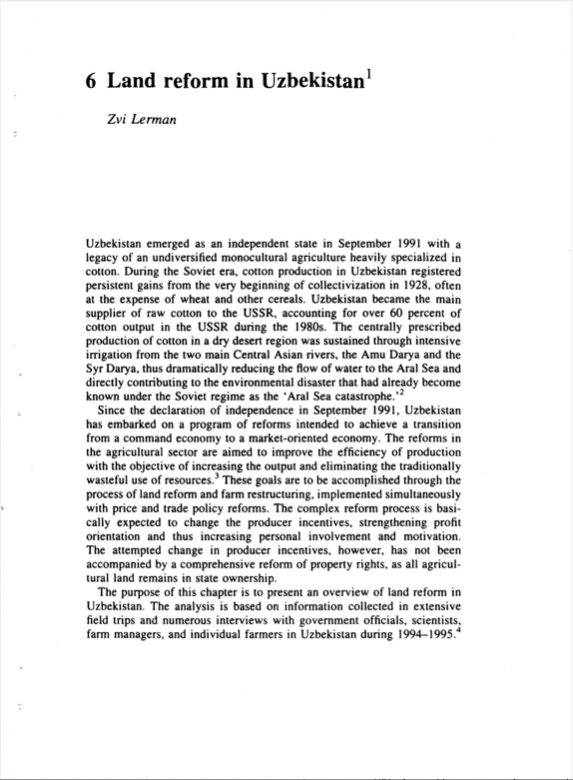Réforme agraire: colonisation et coopératives agricoles 1998/1
This issue of Land Reform, Land Settlement and Cooperatives includes interesting descriptions of land tenure and related policies in Uganda, Tunisia, the United Republic of Tanzania and Morocco. Two thought-provoking articles on access to land and other assets focus on policies to reduce poverty and the function of markets in the allocation of production resources. In the first, J. Melmed-Sanjak and S.
réforme agraire:COLONISATION ET COOPÉRATIVES AGRICOLES
Land Reform in Uzbekistan
FIRST PARAGRAPH OF CHAPTER: Uzbekistan emerged as an independent state in September l99l with a legacy of an undiversified monocultural agriculture heavily specialized in cotton. During the Soviet era, cotton production in Uzbekistan registered persistent gains from the very beginning of collectivization in 1928, often at the expense of wheat and other cereals.
Complex legacy of Latin America's agrarian reform
Chronicle of a land redeemed: The struggle for agrarian reform in Barobo, Valencia
This video documents the struggle of sugarcane farmers of Valencia, Bukidnon, Philippines in claiming their rights to the land they have long been cultivating. It tells how farmers were harassed by the former landowner who, despite notice of redistribution under the Comprehensive Agrarian Reform Program (CARP), wanted to hold on to the land and continued to force evict them.
réforme agraire:COLONISATION ET COOPÉRATIVES AGRICOLES
Land Registration Reform in Indonesia
This paper focuses on the Land Administration Project implemented by the National Land Agency as a central part of the reform of land administration process in Indonesia.
The reconstruction of rural institutions
At the end of the 1980s, most agriculture in Latin America and the Caribbean shared the following features: an over-protected agricultural sector; strong intervention from the state; excessive regulations and obstacles to interactions with other economic agents; a static land market; and a bimodal type of productive organization, i.e. a few powerful economic units and a large mass of smallholder producers.
Land Titling: Good, Bad or Unimportant?
A comparative analysis of the development of the different land tenure systems in Kenya and Tanzania, and the merits and challenges of both.







